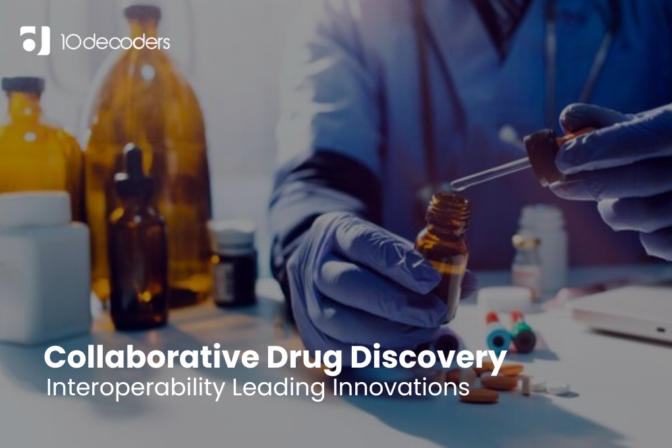Collaborative Drug Discovery: Interoperability Leading Innovations
The journey from a disease target to a safe and effective drug is long, perilous, and often rife with uncertainties. Traditionally, pharmaceutical companies shouldered the burden of this journey alone, navigating treacherous landscapes of preclinical research, clinical trials, and regulatory hurdles. However, this siloed approach, while yielding some successes, has proven costly, time-consuming, and prone to failure. In recent years, a paradigm shift has emerged: collaborative drug discovery.
Collaborative drug discovery leverages the collective expertise and resources of diverse stakeholders, fostering open innovation and knowledge sharing. This collaborative ecosystem encompasses academic institutions, research labs, biotech companies, pharmaceutical giants, and even patient advocacy groups. Each contributor brings unique strengths to the table – academic scientists provide fundamental knowledge of disease mechanisms, biotech start-ups offer agility and cutting-edge technologies, while established pharmaceutical companies possess the infrastructure and regulatory know-how to bring drugs to market.
The Driving Force: Interoperability
At the heart of this collaborative ecosystem lies interoperability, the seamless exchange and integration of data across different entities. Traditionally, data silos within and between organisations created informational barriers, hindering effective collaboration and hindering the discovery process. Open-access databases, standardised data formats, and secure cloud platforms are now breaking down these barriers, enabling real-time data sharing and collaborative analysis. This fosters
- Target and drug candidate identification: Shared databases of genomic, proteomic, and phenotypic data, combined with powerful analytical tools, can accelerate the identification of promising drug targets and potential lead compounds.
- Virtual high-throughput screening: By harnessing the combined computational power of different labs, researchers can virtually screen millions of molecules against target proteins, significantly reducing the time and cost associated with traditional laboratory-based screening methods.
- Preclinical and clinical trial design and analysis: Sharing preclinical data on safety and efficacy across different labs can refine clinical trial designs and identify potential risks early on. Similarly, collaborative analysis of clinical trial data can yield deeper insights into drug efficacy and safety, leading to more informed treatment decisions.
Fueling Innovation Across Therapeutic Areas
Collaborative drug discovery is not a one-size-fits-all approach. Its specific applications and benefits vary depending on the therapeutic area and the challenges at hand. Here are some illustrative examples
- Rare diseases: With limited patient populations and market incentives, drug development for rare diseases often falls through the cracks of traditional pharmaceutical pipelines. Collaborative efforts, pooling resources and expertise, can breathe life into promising research avenues and bring much-needed therapies to patients with unmet medical needs.
- Antimicrobial resistance: The rise of antibiotic-resistant bacteria poses a grave threat to global health. By sharing data on resistance mechanisms and collaborating on the development of new antibiotics and alternative therapies, researchers can stay ahead of the curve and combat this critical challenge.
- Neurodegenerative diseases: Understanding the complex and multifaceted nature of neurological disorders like Alzheimer’s and Parkinson’s requires a comprehensive approach. Collaborative initiatives bridging academia and industry are accelerating research efforts and paving the way for novel treatment strategies.
Challenges and Opportunities on the Horizon
Despite its immense potential, collaborative drug discovery faces its own set of challenges. Establishing trust and forging effective partnerships across diverse entities requires clear communication, intellectual property considerations, and robust data security measures. Additionally, harmonising data formats and standardising research protocols across different labs remains a work in progress.
However, the opportunities presented by collaborative drug discovery are far too promising to ignore. By actively addressing the challenges and leveraging the power of interoperability, this collaborative approach holds the key to
- Reduced research and development costs: Sharing resources and expertise can decrease the financial burden of drug development, particularly for smaller start-ups and academic institutions.
- Faster development timelines: Collaborative efforts can streamline the drug discovery process, bringing life-saving therapies to patients sooner.
- Increased success rates: Sharing data and expertise can enhance the accuracy of target identification and lead optimization, leading to a higher probability of successful drug development.
- Greater innovation: The cross-pollination of ideas and the exploration of unconventional approaches facilitated by collaboration can pave the way for breakthrough discoveries in previously intractable therapeutic areas.
Conclusion
The future of drug discovery lies not in solitary endeavours, but in embracing the power of collaboration. By fostering interoperability, building trust, and harnessing the diverse strengths of academia, industry, and patient communities, we can unlock the vast potential of collaborative drug discovery. This collective effort holds the promise of accelerating the path from bench to bedside, bringing hope and healing to millions suffering from a wide range of ailments. As we continue to dismantle the walls of data silos and forge stronger bonds of collaboration, a new era of innovation in drug discovery beckons, one that promises to deliver transformative therapies and improve the lives of countless individuals across the globe.



